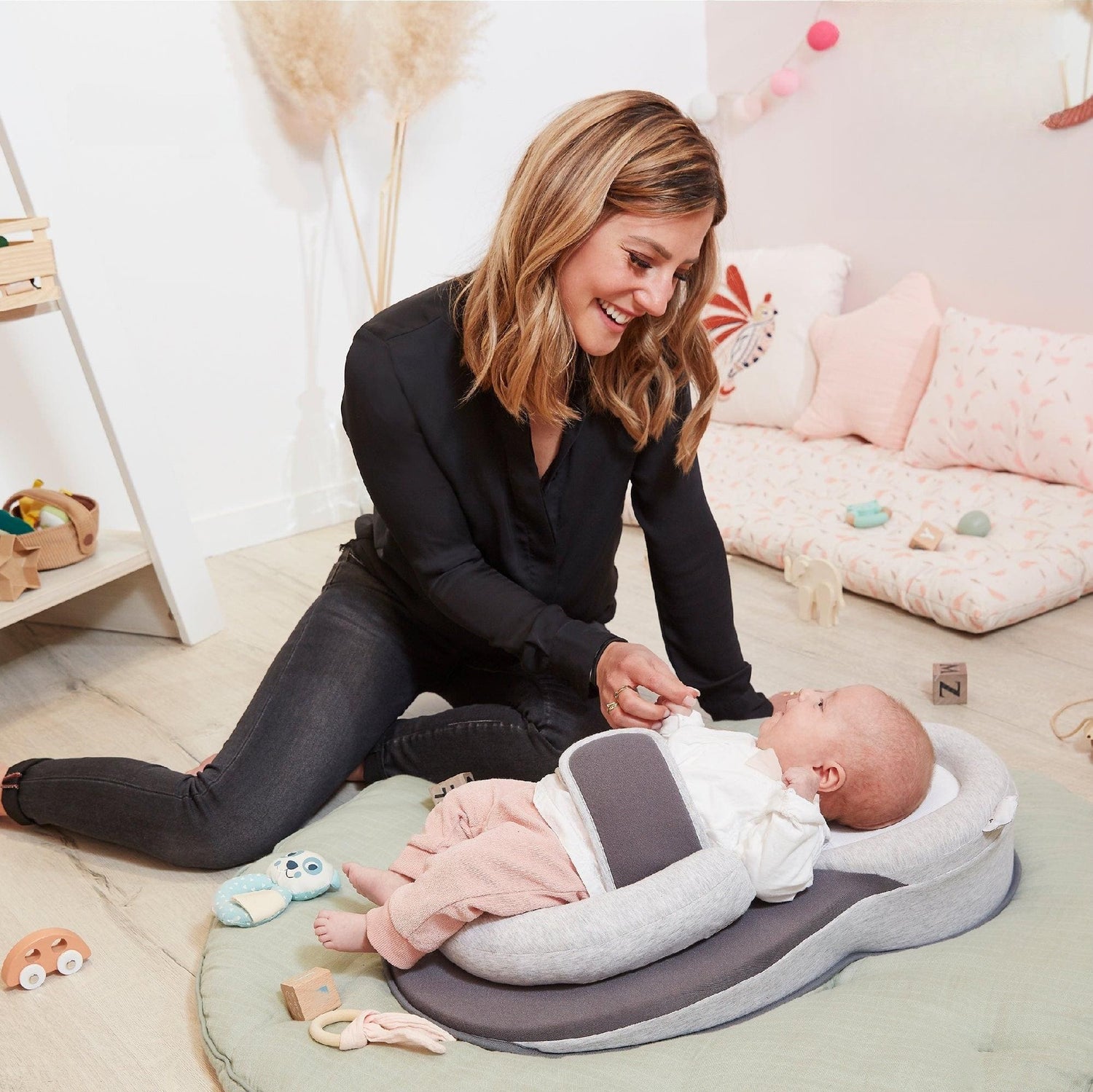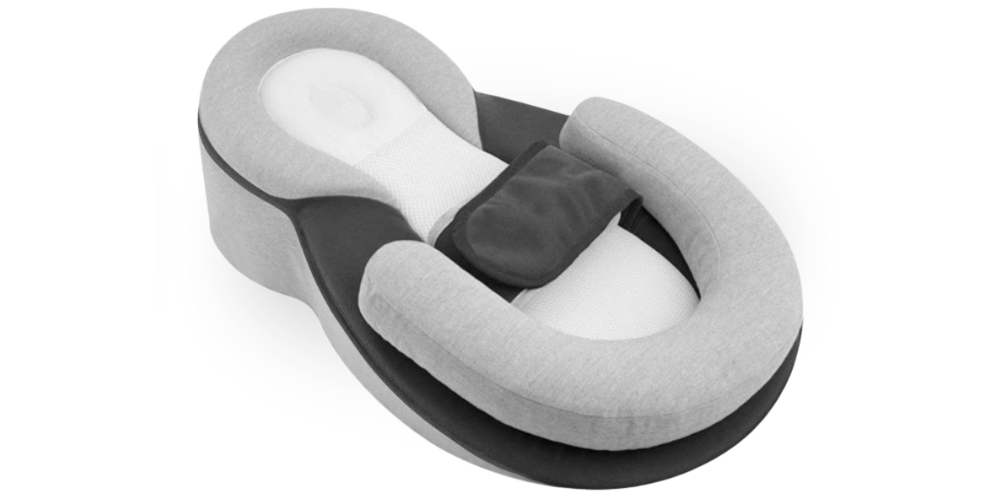When your baby is in pain from reflux, you’ll try anything to help them sleep.
Late-night searches turn up wedges, positioners, pillows, swings, vibrating seats, and endless “miracle” products — all promising instant relief.
But here’s the truth: not all reflux sleep aids are safe, and some can even increase the risk of suffocation or airway restriction.
This guide will help you cut through the noise — to understand what works, what doesn’t, and what experts actually recommend for reflux comfort and safe sleep.
Note: This article provides general information and does not replace medical advice. Always consult your pediatrician before introducing new sleep aids.
Why So Many Parents Look for Reflux Sleep Aids
If your baby cries after every feed, spits up constantly, and refuses to lie flat, it’s easy to feel desperate.
You’re running on no sleep, covered in burp cloths, and everyone’s advice seems to contradict each other.
So when a product claims to “instantly cure reflux,” it’s tempting.
But most of these solutions fall into two categories:
-
Unsafe positioners that change how your baby sleeps.
-
Safe ergonomic supports that work with pediatric guidelines, not against them.
Knowing the difference is critical.
The Unsafe Reflux “Solutions” to Avoid
Here are some popular items parents often try — and why experts warn against them:
❌ 1. Pillow wedges under the mattress
Tilting the mattress by placing towels or wedges underneath seems logical, but it can cause babies to slide into unsafe positions. The incline is often too steep and untested.
❌ 2. Positioners or sleep pods with soft sides
Any product that lets your baby sink into it or turn sideways increases the risk of suffocation. Avoid anything that’s not firm and flat under the baby’s back.
❌ 3. Car seats or swings for overnight sleep
These hold babies in a semi-sitting position, which actually increases stomach pressure and restricts breathing. They’re for supervised use only — not sleep.
❌ 4. Unregulated “reflux nests” from social media
Many trendy loungers online are not safety-tested, have incorrect angles, or use materials that trap heat.
If a brand doesn’t mention tested incline or breathable materials, it’s not worth the risk.
“The safest sleep surface is still flat and firm — but comfort solutions can be safe if they’re tested and designed with proper incline and airflow.”
— Dr. Emily Shaw, Pediatric Osteopath
What Safe Reflux Comfort Looks Like
Safe comfort solutions are those that support digestion and reduce discomfort while keeping your baby’s airway open and body properly aligned.
Here’s what experts recommend looking for:
✅ Pediatric-recommended incline (10–15°) — enough to help gravity assist digestion, but not so steep that it causes sliding.
✅ Firm, breathable surface — prevents overheating and allows airflow.
✅ Anti-roll design — keeps your baby in a stable back-sleeping position.
✅ Secure straps or wraparound system — prevents slipping into unsafe angles.
✅ Certified materials — hypoallergenic, tested for chemical safety.
This is exactly what inspired the creation of DreamNest™ — a baby bed developed by pediatric osteopaths to relieve reflux naturally and safely.
It combines expert-recommended incline, breathable fabrics, and anti-roll barriers for peace of mind.
What Actually Helps Reflux (Beyond Sleep Aids)
While safe ergonomic supports can make a big difference, the best results come from combining them with healthy feeding and bedtime routines:
-
Hold baby upright for 20–30 minutes after feeding
-
Feed smaller amounts more frequently
-
Burp often to release trapped air
-
Avoid tight clothing around the belly
-
Keep the sleep environment calm and cool
Reflux improves with time as your baby’s digestion matures — but small, consistent habits can ease the journey.
When to Talk to Your Pediatrician
Even with safe comfort products, some babies need extra care.
Call your pediatrician if your baby:
-
Isn’t gaining weight
-
Vomits forcefully or frequently
-
Spits up blood or green fluid
-
Cries in pain after every feed
-
Has trouble breathing or sleeping even when upright
Your doctor can rule out underlying conditions like GERD or allergies and help guide the next steps.
FAQs
Are any reflux sleep products truly safe?
Yes — if they’re specifically designed, tested, and approved for infant use with a proper incline and anti-roll design, like DreamNest™.
Why can’t I just raise one end of the crib?
DIY inclines can create gaps where babies slide or roll, increasing suffocation risk. Always use products made for safe infant incline.
What’s the difference between a lounger and a sleep aid?
A lounger like DreamNest™ is ergonomic support — not a medical treatment. It aids comfort, not cures reflux.
Do pediatricians recommend any sleep aids?
Most recommend focusing on safe flat sleep — but many recognize that tested ergonomic designs can offer additional comfort when used correctly.
Conclusion: Choose Safety First — Relief Will Follow
Reflux is hard — for your baby and for you.
But the solution isn’t another unsafe gadget. It’s a combination of expert-backed safety, gentle incline, and breathable comfort that lets both of you finally rest.
You don’t have to risk your baby’s safety to find relief. You just need the right support.



